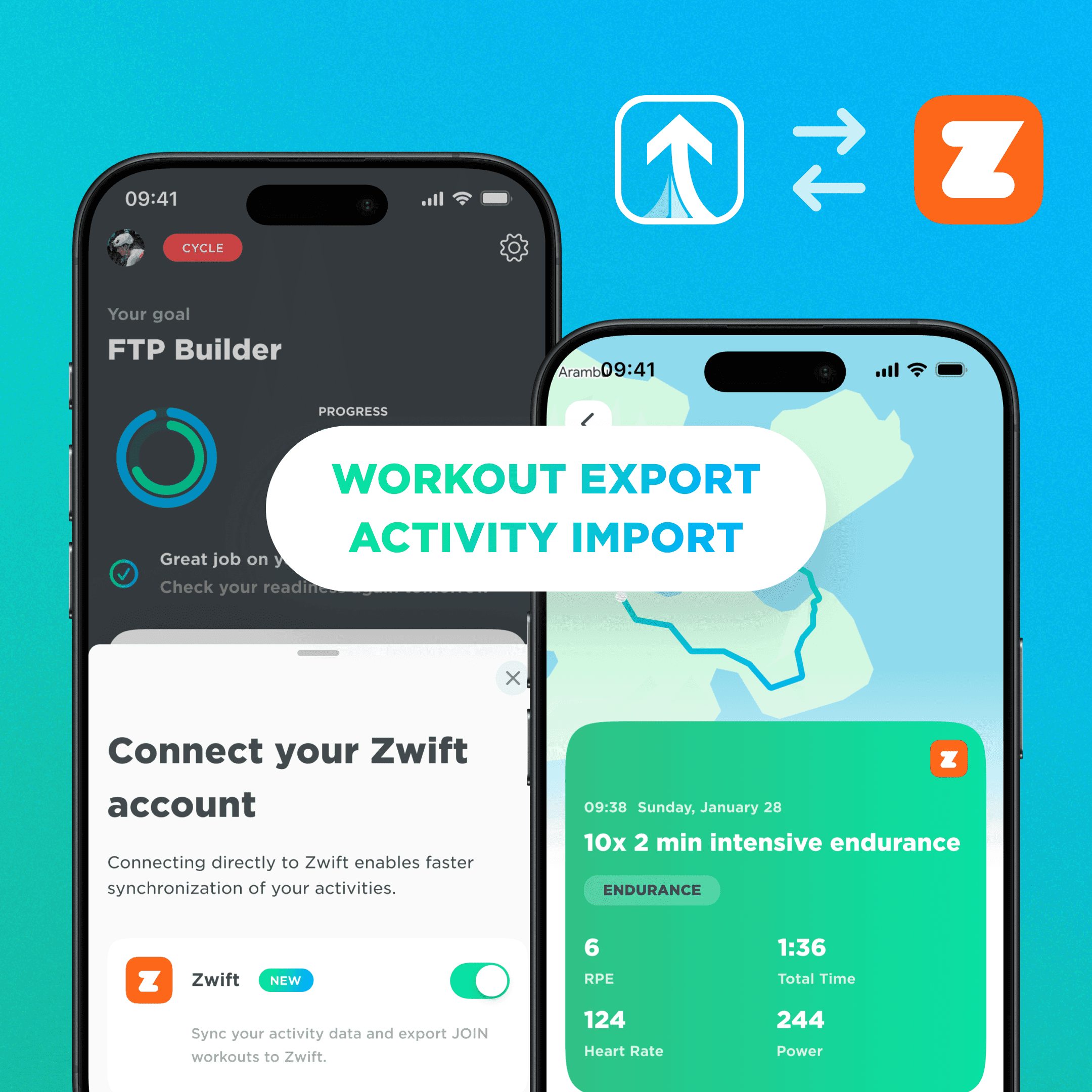Why use NP for your training?

Nov 4, 2020

Why use NP for your training?
Nov 4, 2020

Why use NP for your training?

Nov 4, 2020

Normalized power (NP) is one of the most used but also most confusing terms in cycling training jargon. You have probably heard some assumptions about this term, many of them most likely wrong. In this article we discuss the definition and how to use the value to analyze your training.
What’s NP? And what isn’t?
Normalized power is actually an algorithm that calculates the physiological load of an interval training. It was introduced by TrainingsPeaks and is used to express the difference in load on the body of a steady state power ride and a ride with a lot of variation in power. As an example we take someone that rides at a steady pace for tho hours with an average of 200W and someone else who rides at the same, 200W average, but produces 50W in the first hour and 350W in the second hour. Both rides have the same average power, but their NP is clearly different. The physiological strain and differences in intensity of both training sessions are not well expressed when you only look at the average power of these rides. In this case normalized power would come in handy. The calculation of NP gives a more accurate indication of the intensity and strain on the body of these training sessions. When the average power quickly rises and falls (e.g. between two intervals), the NP will decrease less rapidly in this case because the variation in power (intervals) will be included in the formula. With this calculation it is possible to get a better indication of how heavy the interval training was. The calculation of normalized power is quite complicated and sometimes not well understood. Often you can hear riders say ‘the NP calculation filters out the moments when your power was zero’ or ‘the NP is the power you need to deliver to ride at a constant speed’. Both assumptions are wrong.
NP formula trademark
To calculate the NP you have to do the following: calculate a 30-second moving average of the power data, increase this value to the fourth power, take the average of these values and calculate the root to the fourth power. The result of this is the 30-second moving average power, this is the actual definition of normalized power. Now you can forget about the calculation of normalized power. The only important thing to remember is that it is a mathematical approach to express the variation in power. Many training parameters are based on NP instead of average power. The whole performance management chart, for example, is based on NP. Also the intensity factor (IF) and training stress score (TSS) are based on NP.
NP is often used to indicate the intensity of a prescribed training. Especially when you do intervals above your FTP, the average power of a workout can be low, but NP and therefore TSS will still be quite high because it is a better representation of the intensity of the workout. NP can best be used for the analysis afterwards, it gives a good insight into how heavy the training or competition was.
Finally, you may have noticed the little ‘r’ behind normalized power. This stands for a registered trademark, which means that this term and the way it is calculated is owned by TrainingsPeaks and its mother company (Peaksware). For this reason Strava, the training platform Today’s Plan and others, have developed their own value. Not only the name but also the calculation is slightly different from TrainingPeaks’ NP. But the idea and the principle are the same. It may be that you encounter a small difference between these values, but that is not a problem. You can interpret these values in exactly the same way.
How to get better?
Getting better is all about timing. There are actually no good or bad workouts. There is only a bad combination or the wrong workout at the wrong time. The path towards progress is therefore a training plan with the right training stimulus that takes into account your level, goals and available time. To help you with that we developed an algorithm in the JOIN Cycling application. It provides you with a highly flexible training plan that takes into account your level, goals and availability, and makes sure that you get the most out of your rides.
Normalized power (NP) is one of the most used but also most confusing terms in cycling training jargon. You have probably heard some assumptions about this term, many of them most likely wrong. In this article we discuss the definition and how to use the value to analyze your training.
What’s NP? And what isn’t?
Normalized power is actually an algorithm that calculates the physiological load of an interval training. It was introduced by TrainingsPeaks and is used to express the difference in load on the body of a steady state power ride and a ride with a lot of variation in power. As an example we take someone that rides at a steady pace for tho hours with an average of 200W and someone else who rides at the same, 200W average, but produces 50W in the first hour and 350W in the second hour. Both rides have the same average power, but their NP is clearly different. The physiological strain and differences in intensity of both training sessions are not well expressed when you only look at the average power of these rides. In this case normalized power would come in handy. The calculation of NP gives a more accurate indication of the intensity and strain on the body of these training sessions. When the average power quickly rises and falls (e.g. between two intervals), the NP will decrease less rapidly in this case because the variation in power (intervals) will be included in the formula. With this calculation it is possible to get a better indication of how heavy the interval training was. The calculation of normalized power is quite complicated and sometimes not well understood. Often you can hear riders say ‘the NP calculation filters out the moments when your power was zero’ or ‘the NP is the power you need to deliver to ride at a constant speed’. Both assumptions are wrong.
NP formula trademark
To calculate the NP you have to do the following: calculate a 30-second moving average of the power data, increase this value to the fourth power, take the average of these values and calculate the root to the fourth power. The result of this is the 30-second moving average power, this is the actual definition of normalized power. Now you can forget about the calculation of normalized power. The only important thing to remember is that it is a mathematical approach to express the variation in power. Many training parameters are based on NP instead of average power. The whole performance management chart, for example, is based on NP. Also the intensity factor (IF) and training stress score (TSS) are based on NP.
NP is often used to indicate the intensity of a prescribed training. Especially when you do intervals above your FTP, the average power of a workout can be low, but NP and therefore TSS will still be quite high because it is a better representation of the intensity of the workout. NP can best be used for the analysis afterwards, it gives a good insight into how heavy the training or competition was.
Finally, you may have noticed the little ‘r’ behind normalized power. This stands for a registered trademark, which means that this term and the way it is calculated is owned by TrainingsPeaks and its mother company (Peaksware). For this reason Strava, the training platform Today’s Plan and others, have developed their own value. Not only the name but also the calculation is slightly different from TrainingPeaks’ NP. But the idea and the principle are the same. It may be that you encounter a small difference between these values, but that is not a problem. You can interpret these values in exactly the same way.
How to get better?
Getting better is all about timing. There are actually no good or bad workouts. There is only a bad combination or the wrong workout at the wrong time. The path towards progress is therefore a training plan with the right training stimulus that takes into account your level, goals and available time. To help you with that we developed an algorithm in the JOIN Cycling application. It provides you with a highly flexible training plan that takes into account your level, goals and availability, and makes sure that you get the most out of your rides.
Normalized power (NP) is one of the most used but also most confusing terms in cycling training jargon. You have probably heard some assumptions about this term, many of them most likely wrong. In this article we discuss the definition and how to use the value to analyze your training.
What’s NP? And what isn’t?
Normalized power is actually an algorithm that calculates the physiological load of an interval training. It was introduced by TrainingsPeaks and is used to express the difference in load on the body of a steady state power ride and a ride with a lot of variation in power. As an example we take someone that rides at a steady pace for tho hours with an average of 200W and someone else who rides at the same, 200W average, but produces 50W in the first hour and 350W in the second hour. Both rides have the same average power, but their NP is clearly different. The physiological strain and differences in intensity of both training sessions are not well expressed when you only look at the average power of these rides. In this case normalized power would come in handy. The calculation of NP gives a more accurate indication of the intensity and strain on the body of these training sessions. When the average power quickly rises and falls (e.g. between two intervals), the NP will decrease less rapidly in this case because the variation in power (intervals) will be included in the formula. With this calculation it is possible to get a better indication of how heavy the interval training was. The calculation of normalized power is quite complicated and sometimes not well understood. Often you can hear riders say ‘the NP calculation filters out the moments when your power was zero’ or ‘the NP is the power you need to deliver to ride at a constant speed’. Both assumptions are wrong.
NP formula trademark
To calculate the NP you have to do the following: calculate a 30-second moving average of the power data, increase this value to the fourth power, take the average of these values and calculate the root to the fourth power. The result of this is the 30-second moving average power, this is the actual definition of normalized power. Now you can forget about the calculation of normalized power. The only important thing to remember is that it is a mathematical approach to express the variation in power. Many training parameters are based on NP instead of average power. The whole performance management chart, for example, is based on NP. Also the intensity factor (IF) and training stress score (TSS) are based on NP.
NP is often used to indicate the intensity of a prescribed training. Especially when you do intervals above your FTP, the average power of a workout can be low, but NP and therefore TSS will still be quite high because it is a better representation of the intensity of the workout. NP can best be used for the analysis afterwards, it gives a good insight into how heavy the training or competition was.
Finally, you may have noticed the little ‘r’ behind normalized power. This stands for a registered trademark, which means that this term and the way it is calculated is owned by TrainingsPeaks and its mother company (Peaksware). For this reason Strava, the training platform Today’s Plan and others, have developed their own value. Not only the name but also the calculation is slightly different from TrainingPeaks’ NP. But the idea and the principle are the same. It may be that you encounter a small difference between these values, but that is not a problem. You can interpret these values in exactly the same way.
How to get better?
Getting better is all about timing. There are actually no good or bad workouts. There is only a bad combination or the wrong workout at the wrong time. The path towards progress is therefore a training plan with the right training stimulus that takes into account your level, goals and available time. To help you with that we developed an algorithm in the JOIN Cycling application. It provides you with a highly flexible training plan that takes into account your level, goals and availability, and makes sure that you get the most out of your rides.
More Relevant Articles
Discover valuable training tips to enhance your cycling performance.
More Relevant Articles
Discover valuable training tips to enhance your cycling performance.
More Relevant Articles
Discover valuable training tips to enhance your cycling performance.

Unlock Your Cycling Potential Today
Join thousands of cyclists who have improved their performance with JOIN's training plans.
Sign Up
Learn More

Unlock Your Cycling Potential Today
Join thousands of cyclists who have improved their performance with JOIN's training plans.
By joining, you agree to our Terms and Conditions and our Privacy Policy.

Unlock Your Cycling Potential Today
Join thousands of cyclists who have improved their performance with JOIN's training plans.
By joining, you agree to our Terms and Conditions and our Privacy Policy.
Join Now
Join Now


